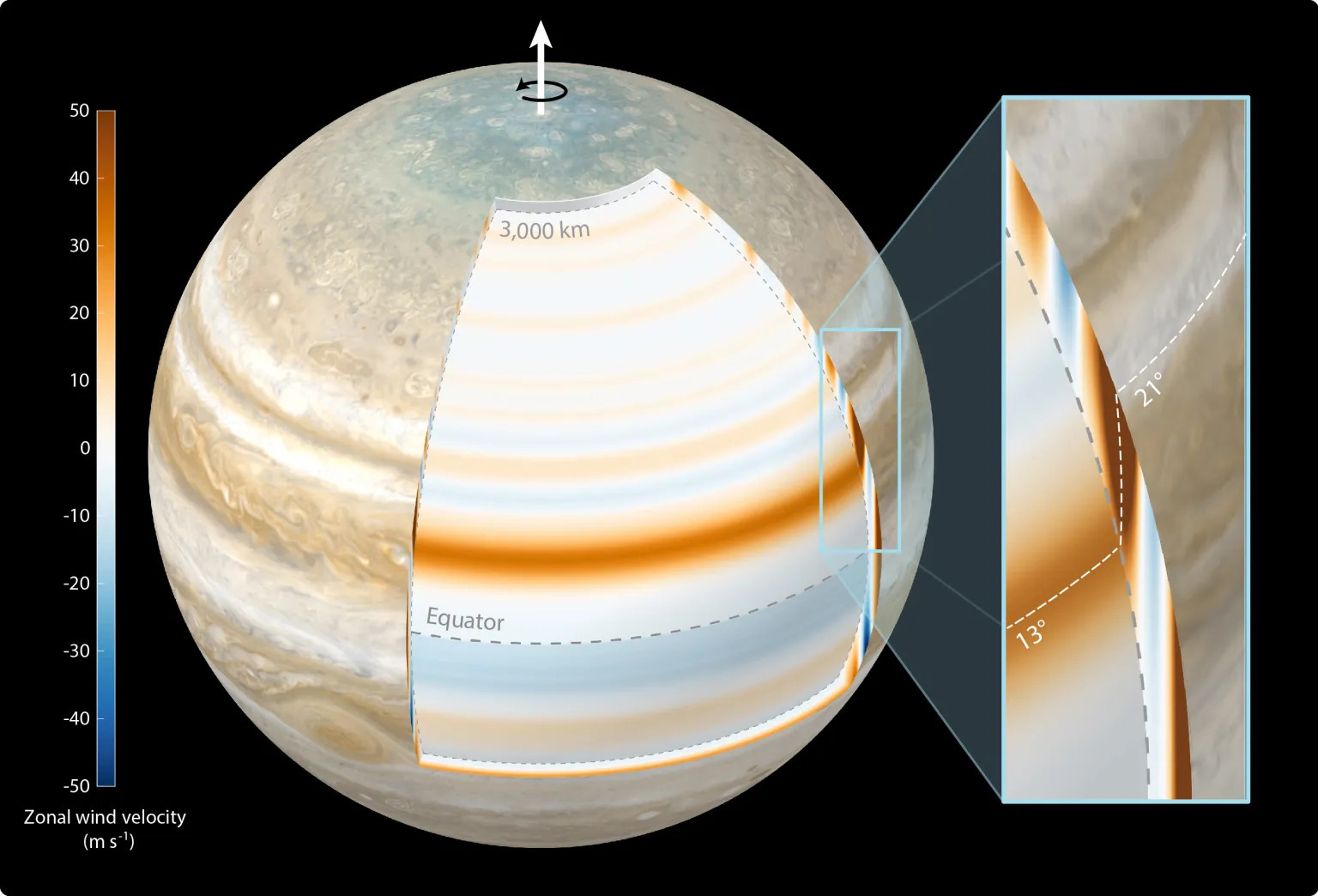Juno Mission finds Jupiter's winds in cylindrical layers, revealing internal structure

NASA's Juno mission has made a groundbreaking discovery about Jupiter's internal structure. By studying the planet's atmosphere, scientists have found that the atmospheric winds of Jupiter operate in a cylindrical manner parallel to its spin axis. This discovery provides deeper insights into the gas giant's long-debated internal structure.
Juno, the spacecraft that entered Jupiter's orbit in 2016, has been closely observing Jupiter's atmosphere. Its scientific instruments have delved beneath Jupiter's turbulent cloud deck during its 55 flybys. The mission aims to unravel the mysteries of Jupiter's internal workings.
One of the key ways the Juno mission investigates the planet's interior is through radio science. Scientists track Juno's radio signal as it passes by Jupiter at incredible speeds, using the Deep Space Network antennas. These measurements allow researchers to detect tiny variations in Juno's velocity, caused by fluctuations in Jupiter's gravity field.
The high-precision data collected by Juno has led to a series of significant discoveries. These include the identification of a dilute core deep within Jupiter and the determination of the depth of the planet's zones and belts. These zones and belts span approximately 1,860 miles (3,000 kilometers) from the cloud tops.
To pinpoint the location and characteristics of Jupiter's winds, scientists used mathematical techniques commonly used to model the gravitational variations and surface elevations of terrestrial planets, such as Earth. By leveraging Juno's precise measurements, researchers achieved a four-fold increase in resolution over previous models, which relied on data obtained by Voyager and Galileo, previous pioneering missions to Jupiter carried out by NASA.
The study revealed that Jupiter's dominant jet streams, known as zonal flows, extend inward cylindrically from the cloud-level white and red zones and belts, rather than radiating in every direction like a sphere. This finding confirms a two-decade-old model while providing valuable insights into the orientation and structure of these powerful east-west zonal flows.
Ryan Park, a Juno scientist and lead of the mission's gravity science investigation at NASA's Jet Propulsion Laboratory in Southern California, expressed excitement about the application of this constraining technique to outer planets. He stated, "This is the first time such a technique has been applied to an outer planet."
The findings represent a major milestone in our understanding of Jupiter's complex dynamics and internal processes. By unraveling the mysteries of its atmospheric winds, Juno continues to transform our knowledge of this gas giant, shedding light on the mechanisms that drive its extreme weather patterns.
While there is still much to learn about Jupiter, these new revelations bring us one step closer to comprehending the inner workings of this awe-inspiring celestial giant. NASA's Juno mission reinforces the agency's commitment to pushing the boundaries of scientific exploration and unlocking the secrets of our solar system's most mysterious and captivating planets.
POPULAR
- NASA predicts the Sun's corona behavior, revealing its mysteries using advanced computational methods
- Australia on track for unprecedented, decades-long megadroughts: Supercomputer modeling raises concern
- Revolutionizing precision agriculture: The impact of Transformer Deep Learning on water, energy demands

 How to resolve AdBlock issue?
How to resolve AdBlock issue?